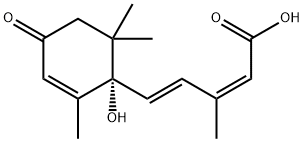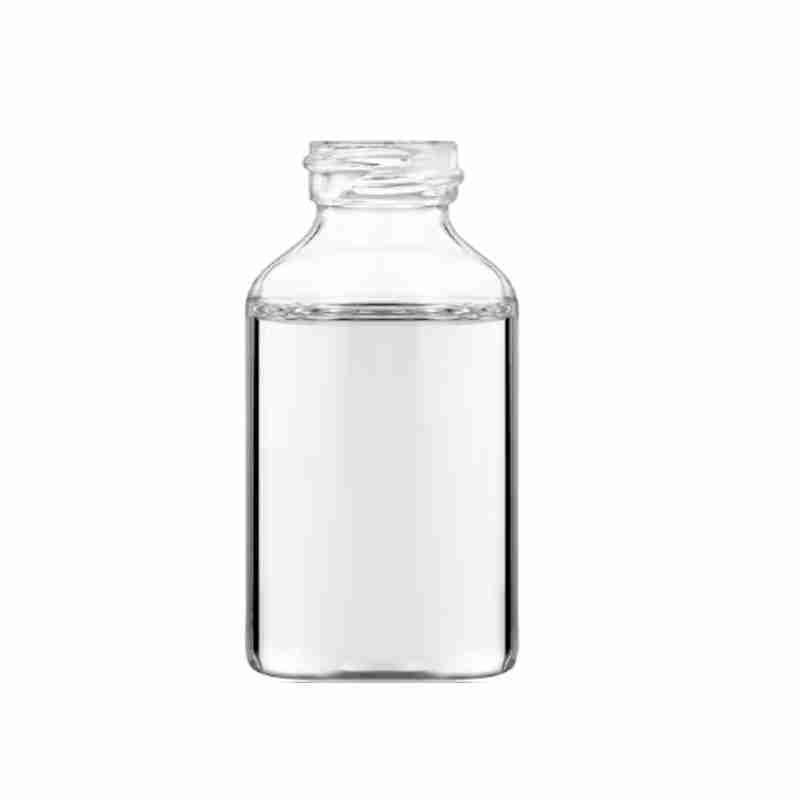Abscisic Acid CAS #21293-29-8
S-Abscisic Acid (ABA) is a plant hormone, also known as Abscisic acid, named after it was originally thought to promote plant leaf abscission. It plays a role in multiple developmental stages of plants. , in addition to promoting leaf shedding, there are other effects, such as inhibiting growth, promoting dormancy, promoting the formation of potato tubers and plant stress resistance.
In fact, abscisic acid is only found in a small number of plants in promoting leaf abscission. abscisic acid can also be synthesized in some phytopathogenic fungi, but it is different from the synthesis pathway in plants. At present, the production of high-purity abscisic acid has been successfully produced by fermentation of Botrytis cinerea on a large scale. Products, and are widely used in agricultural production, disaster prevention and mitigation, ecological vegetation construction, afforestation, urban landscaping and other fields.
发送询盘
Abscisic Acid CAS #21293-29-8
| (+)-Abscisic acid Basic information |
| Product Name: | (+)-Abscisic acid |
| Synonyms: | (ABA)ABSCISIC ACID >98%;(+)-Abscisic acid;ABA, Dormin, (S)-5-(1-Hydroxy-2,6,6-trimethyl-4-oxo-2-cyclohexen-1-yl)-3-methyl-(2Z,4E)-pentadienoic acid;S-(+)-ABA;(S)-(+)-ABSCISIC ACID;[S]-5-[1-HYDROXY-2,6,6-TRIMETHYL-4-OXOCYCLOHEX-2-EN-1-YL]-3-METHYL-[2Z,4E]-PENTADIENOIC ACID;(+)-abscisinii;(+)-cis-abscisicacid |
| CAS: | 21293-29-8 |
| MF: | C15H20O4 |
| MW: | 264.32 |
| EINECS: | 244-319-5 |
| Product Categories: | plantgrowth;Agro-Products;Sesqui-Terpenoids;Plant Hormones;Chiral Reagents;Biochemistry;Plant Growth Regulators;Plant Growth Trgulators (Others);Pharmaceutical Raw Materials;Inhibitors;Plant Growth regulator;21293-29-8 |
| Mol File: | 21293-29-8.mol |
 |
|
| (+)-Abscisic acid Chemical Properties |
| Melting point | 188 ??C |
| alpha | D20 +411.1?? (c = 1 in ethanol); D20 +426.5?? (c = 1 in 0.005N methanolic H2SO4) |
| Boiling point | 327.55??C (rough estimate) |
| density | 1.0583 (rough estimate) |
| refractive index | 410 ?? (C=0.2, EtOH) |
| storage temp. | 2-8??C |
| solubility | Chloroform (Slightly), Ethanol (Sparingly), Methanol (Slightly) |
| pka | 4.87??0.33(Predicted) |
| form | Off-white powder |
| color | White to Pale Yellow |
| optical activity | [??]/D 415??10??, c = 0.1 in ethanol |
| Merck | 14,11 |
| BRN | 2698956 |
| Stability: | Light Sensitive |
| InChIKey | JLIDBLDQVAYHNE-WEYXYWBQSA-N |
| LogP | 1.896 (est) |
| CAS DataBase Reference | 21293-29-8(CAS DataBase Reference) |
| EPA Substance Registry System | 2,4-Pentadienoic acid, 5-[(1S)-1-hydroxy-2,6,6-trimethyl-4-oxo-2-cyclohexen-1-yl]-3-methyl-, (2Z,4E)- (21293-29-8) |
- 2
- 2-diallylpent-4-en-1-amine
- 4
- 95-16-9
- Ammonium sulfamate
- Benzothiazole
- cas:67889-00-3ح2
- cas:83524-75-8 | pigment black 32
- cas:928836-00-4 | 2
- cas:932745-70-5 | 4
- Chemical Minerals
- Coconut diethanolamide
- Daily Chemicals
- discount
- for sale
- General pvc resin
- hexyl D-glucoside
- in stock
- Lauramidopropyl betaine
- LAURIC ACID MONOETHANOLAMIDE
- Petroleum Additives
- Plasticiser
- Ploymers
- price
- PVC
- quotation
- Raw Materal
- Remove term: Petroleum Additives Petroleum Additive
- SODIUM ETHYL 2-SULFOLAURATE
Related Products
Chemical Name: STODDARD SOLVENT
CAS No.: 64742-88-7
Appearance: Colorless or Light Yellow Liquid
Polyhexamethylene guanidine hydrochloride, often abbreviated as PHMG-HCl, is a high molecular weight polymeric biguanide compound known for its potent antimicrobial properties. With a chemical structure that features a long chain of methylene groups bridged by guanidine units, PHMG-HCl is effective against a broad spectrum of microorganisms, including bacteria, viruses, and fungi.
This hydrochloride salt form of PHMG is highly soluble in water and is commonly used in various applications due to its non-irritant and non-toxic nature to human skin and mucous membranes. It is widely recognized for its ability to form a colorless and odorless solution, making it an ideal choice for use in personal care products, medical disinfectants, and water treatment processes.
The versatility of PHMG-HCl lies in its cationic nature, which allows it to bind to negatively charged microbial cell walls, disrupting their integrity and leading to cell death. This mechanism of action contributes to its effectiveness as a preservative and disinfectant. Moreover, its substantivity, or the ability to adhere to surfaces, enhances its long-lasting antimicrobial activity.
In summary, Polyhexamethylene guanidine hydrochloride is a reliable and efficient antimicrobial agent, pivotal in industries where hygiene and cleanliness are paramount, offering a safe and sustainable solution for microbial control.
Chemical Name: Imazalil Sulfate
CAS No.: 58594-72-2
Molecular Formula: C14H14Cl2N2O.H2SO4
Molecular Weight: 395.26
Appearance: Solid
Silicones are a family of synthetic polymers known for their versatility and stability. They are heat-resistant, non-toxic, and have excellent electrical insulation properties. Commonly used in various industries such as construction, automotive, aerospace, and personal care products, silicones offer a wide range of applications from sealants and adhesives to lubricants and medical devices. Their resistance to extreme temperatures and weathering makes them a preferred choice for many high-performance applications.
Chemical Name: Quercetin-3-O-sophoroside
CAS No.: 18609-17-1
Molecular Formula: C27H30O17
Molecular Weight: 626.52
Butylated Hydroxytoluene (BHT) is a synthetic phenolic antioxidant commonly added to foods, cosmetics, and packaging to prevent the oxidation of fats and oils, thereby extending their shelf life. It is also used as a preservative in a variety of products, including rubber, petroleum products, and animal feed. BHT is recognized for its effectiveness in maintaining nutrient levels, color, flavor, and odor in food products . It is known to have a melting point of 69-71??C, a boiling point of 265??C, and is soluble in ethanol, acetone, and benzene, but not in water, glycerin, or propylene glycol . BHT is also used in some dietary supplements due to its antioxidant properties . However, it is important to handle BHT with care, as it can cause skin irritation and is considered harmful if swallowed .
POLY(VINYL CHLORIDE-CO-ISOBUTYL VINYL ETHER) is a copolymer that combines the properties of vinyl chloride and isobutyl vinyl ether. This polymer offers a balance of rigidity and flexibility, along with enhanced chemical resistance and durability. It is commonly used in the production of films, coatings, and adhesives due to its excellent barrier properties against gases and moisture, making it ideal for packaging and construction applications.
Chemical Name: Potassium Castorate
CAS No.: 8013-05-6
Molecular Formula: C57H107K3O12
Molecular Weight: 1101.74718
Appearance: Yellow Liquid
Succinimide is a heterocyclic organic compound and an important industrial chemical. It serves as a key intermediate in the synthesis of various pharmaceuticals, agrochemicals, and other specialty chemicals. Known for its reactivity and versatility, succinimide is widely used in the production of succinic anhydride, a precursor to many polymers and plasticizers, highlighting its significance in the chemical industry.
Silicone oil, known for its chemical designation as dimethicone or polydimethylsiloxane, is a synthetic polymer with a backbone of alternating silicon and oxygen atoms, creating a highly versatile and stable compound. It is renowned for its exceptional lubricating properties, heat resistance, and non-toxic nature, making it a staple in various industries, including cosmetics, automotive, and aerospace.
This hydrophobic, non-volatile oil is valued for its ability to provide a smooth, non-greasy feel and to form stable emulsions with other ingredients. In personal care products, silicone oil is used to impart a silky texture, reduce friction on the skin, and create a protective barrier against environmental stressors without clogging pores.
Silicone oil’s chemical inertness and resistance to oxidation contribute to its long shelf life and stability in formulations. It is also appreciated for its compatibility with a wide range of substances, allowing for the creation of multifunctional products.
In summary, silicone oil is a reliable and multifaceted ingredient, offering a combination of performance, safety, and sensory benefits. Its use in a variety of applications reflects its versatility and enduring appeal in the marketplace.
Benzothiazoles are a class of chemical compounds characterized by a fused benzene and thiazole ring. They exhibit a broad spectrum of applications, particularly as antioxidants in rubber and plastic industries, enhancing product longevity and performance. Additionally, benzothiazoles serve as key intermediates in the synthesis of pharmaceuticals, contributing to the development of life-saving drugs. Recognized for their stability and reactivity, these compounds are integral to advancing material science and healthcare solutions.
Chemical Name: Dehydrocholic acid
Synonyms: Acide dehydrocholique; Triketocholanic acid
CAS No.: 81-23-2
Molecular Formula: C24H34O5
Molecular Weight: 402.53
Appearance: Powder

















